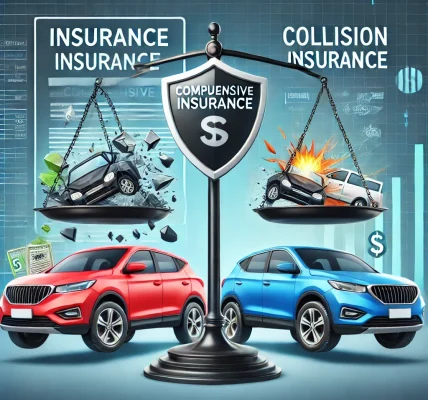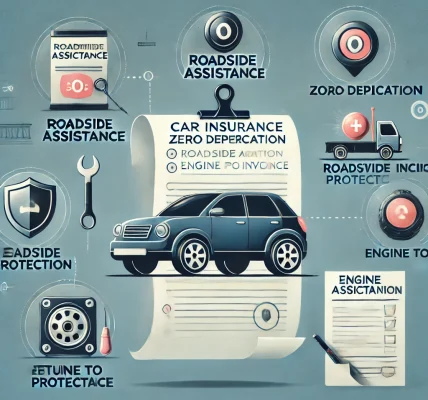Car insurance costs can be a significant expense for drivers, but advancements in technology have paved the way for more personalized and cost-effective solutions. One such innovation is telematics-based and usage-based car insurance (UBI). These policies use real-time driving data to determine your premiums, potentially leading to substantial savings if you are a safe and low-mileage driver. In this guide, we will explore how telematics works, the benefits of usage-based insurance, and how it can help you reduce your insurance costs.
What is Telematics & Usage-Based Car Insurance?
Telematics refers to technology that collects real-time driving data through a small device installed in your vehicle or a smartphone app. Usage-Based Insurance (UBI), also known as pay-as-you-drive or pay-how-you-drive insurance, uses this data to assess your risk level and adjust your insurance premium accordingly.
How Telematics Works
- Installation – A telematics device (also called a black box) is installed in your car, or you may download a mobile app that tracks your driving habits.
- Data Collection – The device or app records data such as speed, acceleration, braking patterns, mileage, and time of travel.
- Analysis by Insurers – The insurance company analyzes your driving data to determine your risk profile.
- Premium Adjustments – Based on your driving habits, you may receive discounts or pay higher premiums if you are deemed a risky driver.
Types of Usage-Based Insurance (UBI)
There are three main types of UBI programs:
- Pay-As-You-Drive (PAYD) – Premiums are based on the total miles driven. The less you drive, the lower your insurance costs.
- Pay-How-You-Drive (PHYD) – Premiums are calculated based on driving behaviors such as speed, braking, and acceleration.
- Manage-How-You-Drive (MHYD) – Combines aspects of PAYD and PHYD, providing feedback to help improve driving habits and lower costs.
Benefits of Telematics & UBI
1. Lower Premiums for Safe Drivers
If you are a responsible driver, telematics-based insurance can reward you with lower premiums. Insurers offer discounts to drivers who exhibit safe behaviors, such as:
- Smooth acceleration and braking
- Adhering to speed limits
- Avoiding late-night driving (when accident risks are higher)
2. Encourages Safer Driving Habits
Since your driving behavior directly impacts your premium, you are more likely to adopt safer driving habits, leading to reduced accident risks and better road safety.
3. Potential Savings for Low-Mileage Drivers
If you don’t drive frequently, a Pay-As-You-Drive (PAYD) insurance policy can save you money. Those who commute shorter distances or use their car occasionally can benefit the most.
4. Reduced Risk of Fraudulent Claims
Telematics devices provide real-time data that helps insurers assess accident details more accurately, reducing the chances of fraudulent claims.
5. Personalized Insurance Pricing
Unlike traditional insurance models that categorize drivers based on general risk factors (age, gender, location), UBI policies are tailored to individual driving habits, making premiums more fair and transparent.
6. Discounts & Rewards
Many insurers offer additional discounts and rewards for safe drivers, such as cashback offers or reduced renewal premiums.
Factors That Influence Telematics-Based Insurance Premiums
Telematics devices track several driving behaviors that can impact your insurance premium:
- Speeding – Exceeding speed limits frequently can increase your premium.
- Braking & Acceleration – Harsh braking and rapid acceleration indicate aggressive driving, leading to higher premiums.
- Time of Day – Driving late at night or during peak traffic hours increases accident risks.
- Mileage – The more you drive, the greater your exposure to risks.
- Cornering – Sharp turns at high speeds suggest reckless driving.
Is Telematics Insurance Right for You?
Ideal for:
✔ Safe and responsible drivers ✔ Low-mileage drivers ✔ Young or new drivers who want to prove their driving skills ✔ Drivers looking for a personalized insurance policy
Not Ideal for:
❌ Drivers who frequently speed or drive aggressively ❌ High-mileage drivers with long daily commutes ❌ People uncomfortable with data tracking and privacy concerns
How to Maximize Savings with Telematics Insurance
If you opt for a telematics-based insurance policy, follow these tips to ensure maximum savings:
✅ Drive Smoothly – Avoid harsh braking and rapid acceleration. ✅ Stick to Speed Limits – Maintaining legal speeds can help lower your premiums. ✅ Limit Nighttime Driving – Accidents are more likely at night; reduce late-night driving when possible. ✅ Plan Your Routes – Avoid congested roads and high-traffic areas. ✅ Review Your Driving Score – Many insurers provide insights into your driving habits; use them to improve your behavior.
Common Concerns About Telematics-Based Insurance
1. Privacy & Data Security
One of the biggest concerns with telematics is data privacy. However, reputable insurers use encryption and secure servers to protect user data. Always review the insurer’s data privacy policies before enrolling.
2. Higher Premiums for Risky Driving
If you exhibit unsafe driving behaviors, your insurance premium may increase. However, this system encourages drivers to adopt better habits over time.
3. Limited Availability
Not all insurance companies offer telematics-based policies, and availability may vary by location.
Conclusion
Telematics and usage-based insurance provide an excellent opportunity for safe and low-mileage drivers to save money on their car insurance. By monitoring your driving habits, you can receive fair pricing, improve road safety, and enjoy rewards for responsible behavior. However, before choosing a telematics-based policy, it’s essential to consider your driving habits, privacy concerns, and insurer’s terms.
If you are a cautious driver looking to cut down your insurance costs, a usage-based insurance plan could be the perfect solution for you!



